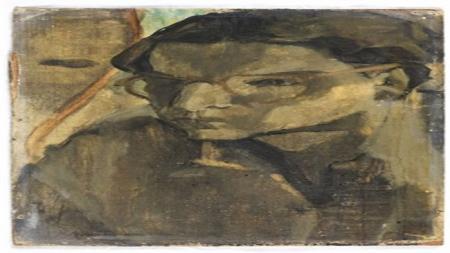
Studying under Feyhaman Duran, the subject of the main exhibition at the Sakıp Sabancı Museum, Turan made a name for himself in the 1930s Istanbul as a talented artist. In the following years, during single-party rule, he traveled through Anatolia as part of the 'Nationwide Journeys' (Yurt Gezileri) project, painting bucolic scenes from distant villages.
After winning a scholarship, Turan traveled to Paris where he became acquainted with leading figures of European art.
Inside the house where Turan grew up, people spoke numerous languages and there was a growing interest among artists of his generation in both western and eastern painting traditions. After graduating from Galatasaray Lycee, Turan enrolled at the Istanbul State Academy of Fine Arts.
"We have to remember that Selim grew up among a circle of contemporary nationalistic poets and writers in early 1930s in Istanbul with the idea that the Turkish nation could not depend on the humanism of 'Greek-Latin culture' alone," explains Necmi Sönmez, the exhibition's curator.
"This idea was also espoused by his father Hüseyinzâde Ali; and he argued that although the technical possibilities based on the science, education and positivist sciences of the Western thought were imperative, he believed that neither Islam nor Islamic culture could be ignored."
Sönmez, who knew Turan personally, is an expert on the artist's work, having published numerous studies of his paintings over different periods. "I started working on this exhibition on April 21," he told me in an interview last week.
"The important issue was to present Selim in a new interpretation in the context of his time. Selim's life and work is deeply influenced by two cities: Istanbul, Paris and the paradigm of Turkish Modernism."
On March 31, 1947, Turan went to Paris, after being granted a scholarship. There he spent most of his time visiting museums in order to get a grasp of the most recent developments in modern European art. Turan was part of a larger group of Turkish artists including Fahrelnissa Zeid, Nejad Devrim, Avni Arbaş, Tiraje Dikmen, Mübin Orhon and Abidin Dino, who also lived and studied in European capitals and imported those influences into their art.
The exhibition takes its title from an architectural project Turan worked on in France in 1976. The work consisted of three columns, which Sönmez says summarizes the artist's career.
